External buyers are driving a paradigm shift in $ETH assets, challenging our inherent perception that it "can only go down."
Author: MONK
Translation: Deep Tide TechFlow
The trading code is $ETH.
Wall Street is experiencing a highlight moment for cryptocurrency.
Traditional finance (TradFi) is exhausting the resources of growth narratives. Artificial intelligence has become the market's hot topic, but the attention on it has become excessive, and software companies are far less attractive today than they were in the 2000s and 2010s.
At a deeper level, growth investors who raise capital for innovative investment stories and large total addressable markets (TAM) know that most AI-related companies are valued at absurd premium levels, and other so-called "growth" narratives are no longer easy to find. Once highly regarded FAANG stocks are gradually transforming into composite assets characterized by "high quality, profit maximization, and moderate annual growth rates."
For example, the median enterprise value to revenue (EV/Rev) multiple for software companies has fallen below 2.0 times.
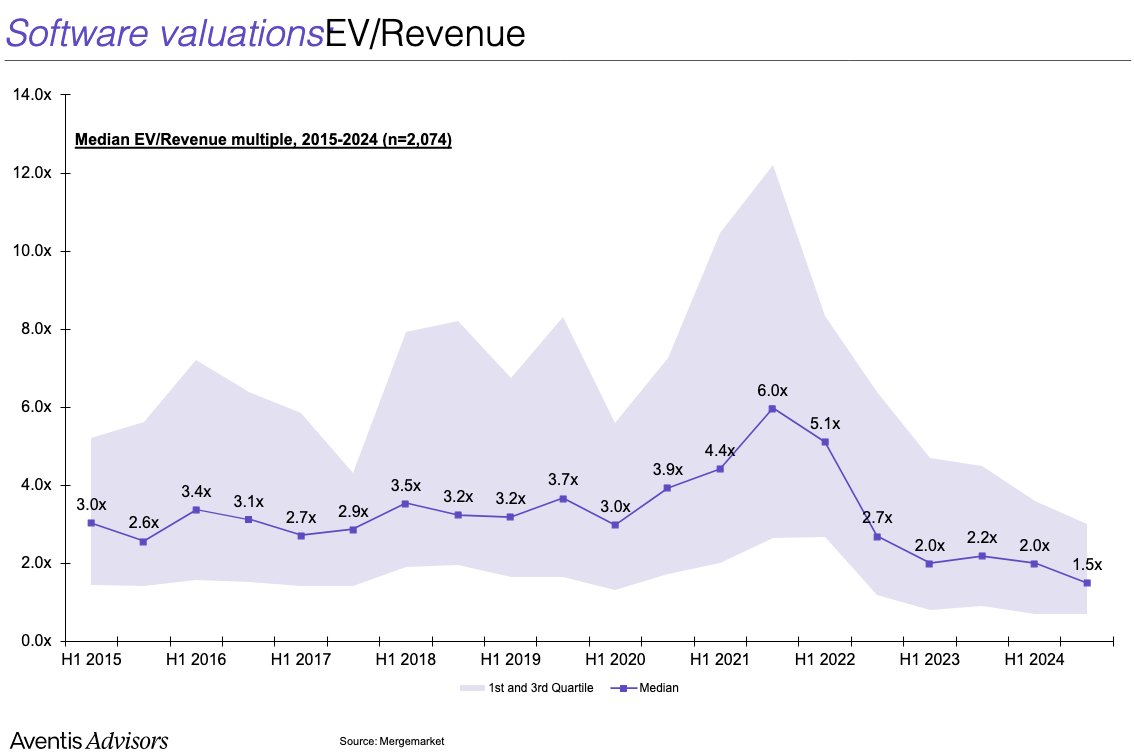
At this moment, cryptocurrency has emerged.
Bitcoin ($BTC) has broken through historical highs, and the U.S. president is vigorously promoting our assets at press conferences, along with a wave of regulatory tailwinds bringing the cryptocurrency asset class back into the spotlight for the first time since 2021.
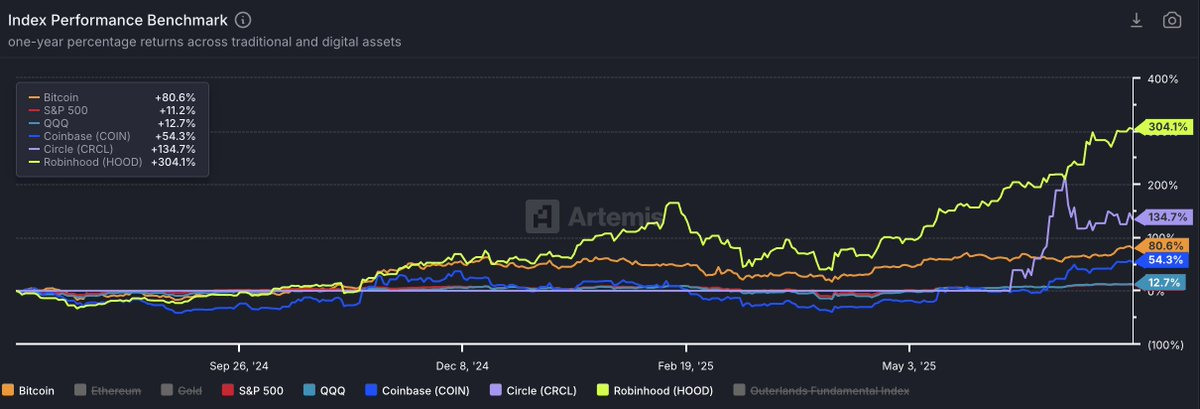
BTC, COIN, HOOD, CIRCLE vs. SPY and QQQ (Source: Artemis)
This time, the protagonists are no longer NFTs and Dogecoin. This time, it is the era of digital gold, stablecoins, "tokenization," and payment reform. Stripe and Robinhood are claiming that cryptocurrency will be the core focus of their next growth phase; $COIN (Coinbase) has successfully joined the S&P 500; Circle is showing the world that cryptocurrency is attractive enough for growth stocks to once again overlook earnings multiples.
But how does all this relate to $ETH?
For us crypto natives, the realm of smart contract platforms seems very fragmented. There’s Solana, Hyperliquid, and a dozen emerging high-performance blockchains and Rollups (on-chain scaling solutions).
We know that Ethereum's leading position has truly been challenged, and it faces existential threats. We also know it has yet to solve the value capture problem.
But I seriously doubt Wall Street understands these issues. In fact, I could boldly say that most Wall Street investors know almost nothing about Solana. If we are honest, XRP, Litecoin, Chainlink, Cardano, and Dogecoin may have higher recognition in external markets than $SOL. After all, these people have been indifferent to the entire cryptocurrency asset class for several years.
What Wall Street knows is that $ETH represents the "Lindy Effect" (the idea that things that have existed for a long time are more likely to continue existing); it has been battle-tested and has long been the primary "beta investment choice" for $BTC. Wall Street sees that $ETH is the only other crypto asset with a liquid ETF. What excites Wall Street is the upcoming catalysts and classic relative value investing.
Those suited investors may not know much about cryptocurrency, but they know that Coinbase, Kraken, and now Robinhood have all decided to "build on Ethereum." With minimal due diligence, they can discover that Ethereum has the largest stablecoin pool on-chain. They will start calculating "moon math" and soon realize that while $BTC has reached historical highs, $ETH is still over 30% lower than its peak in 2021.
You might think that underperformance looks pessimistic, but these people have a different investment approach. They prefer to buy assets that are priced lower but have clear targets, rather than chasing after those that make them question whether they have "missed the opportunity."
I believe they have arrived. Investment authorization is not an issue; any fund can push cryptocurrency exposure through appropriate incentives. Although crypto Twitter (CT) has claimed for over a year that they will no longer touch $ETH, the trading code has performed consistently well over the past month.
As of this year, $SOLETH has fallen nearly 9%. Ethereum's market dominance hit a low in May and has since established the longest upward trend since mid-2023.
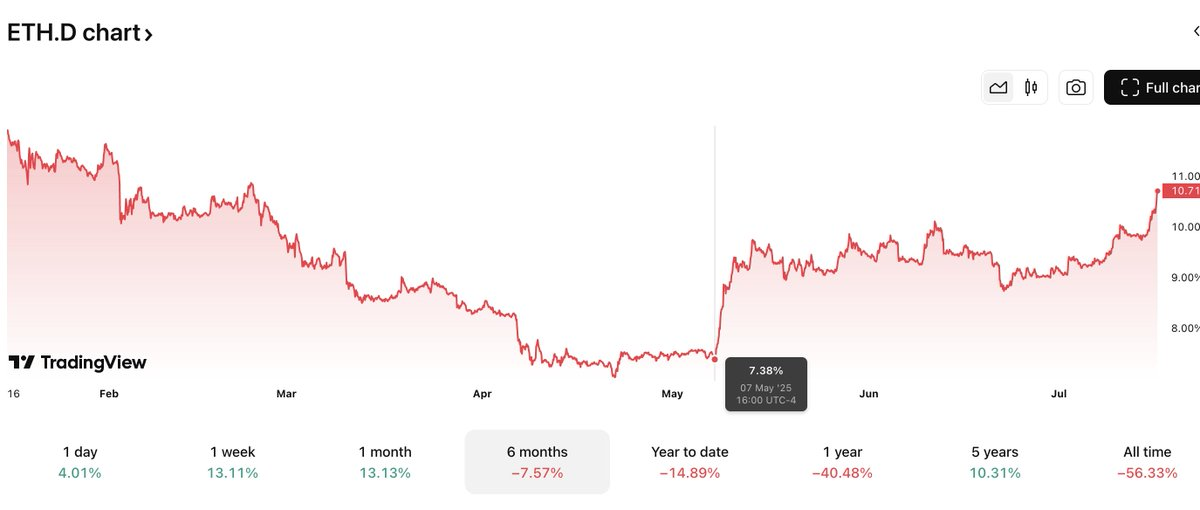
If the entire crypto Twitter (CT) has labeled $ETH as a "cursed coin," why is it still performing well?
The answer is: it is attracting new buyers.
Since March of this year, the inflow of spot ETF funds has shown a one-way growth trend.
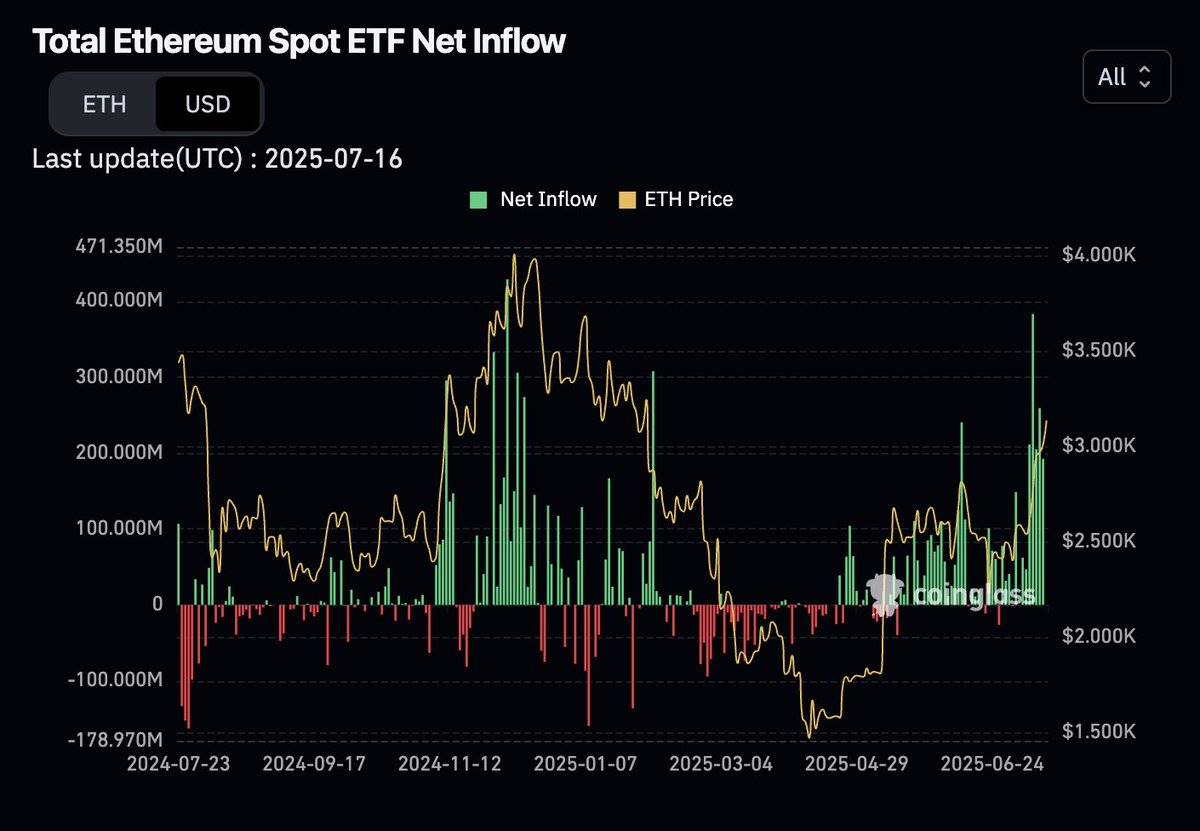
Source: Coinglass
Microstrategy clone funds similar to $ETH are aggressively increasing their positions, adding early structural leverage to the market.
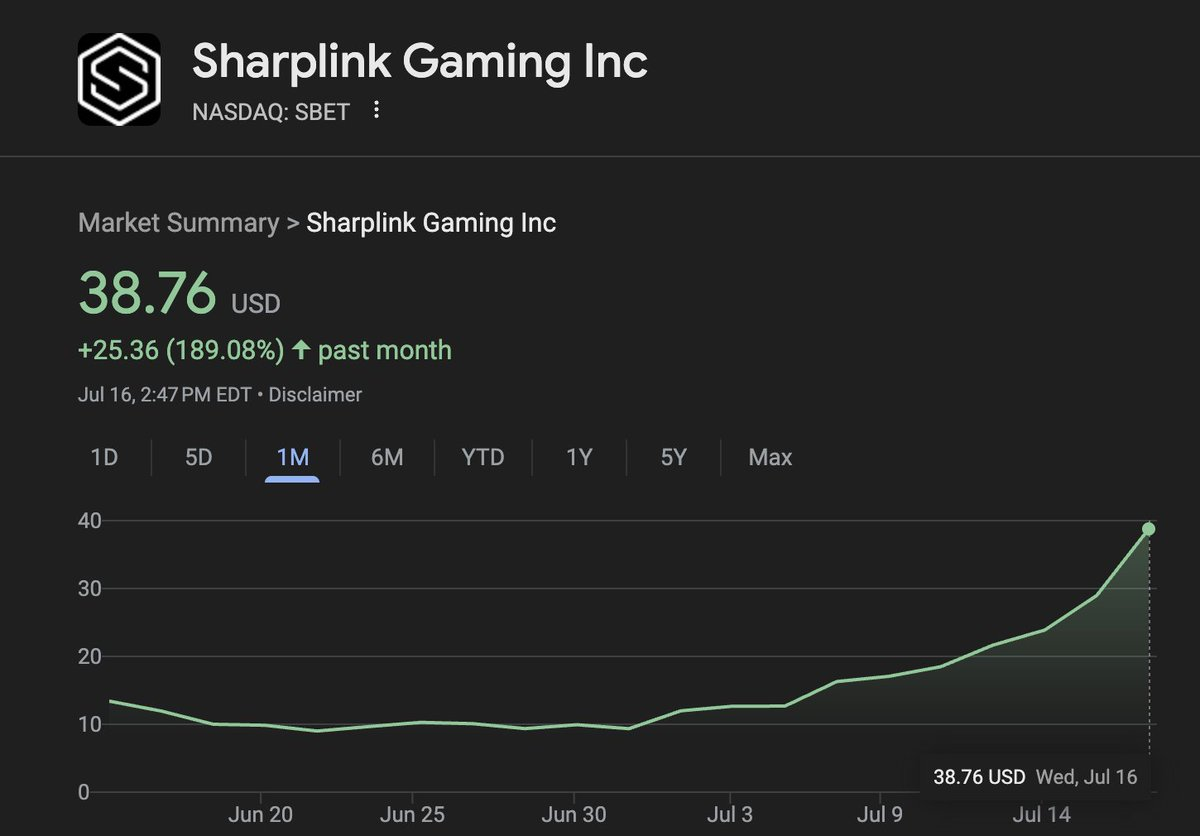
Perhaps some crypto natives have realized their exposure to $ETH is insufficient and are starting to rebalance their positions, possibly exiting from $BTC and $SOL, which have performed well over the past two years, to allocate to Ethereum.
I am not saying that Ethereum has solved its existential problems. I think what may happen at this stage is that $ETH as an asset begins to decouple from the Ethereum network itself.
External buyers are driving a paradigm shift in $ETH assets, challenging our inherent perception that it "can only go down." Shorts will eventually be forced to cover. After that, crypto natives will start chasing the upward momentum until a certain comprehensive speculative frenzy for $ETH occurs, culminating in a spectacular top.
If all this really happens, then a new historical high (ATH) will not be too far away.
免责声明:本文章仅代表作者个人观点,不代表本平台的立场和观点。本文章仅供信息分享,不构成对任何人的任何投资建议。用户与作者之间的任何争议,与本平台无关。如网页中刊载的文章或图片涉及侵权,请提供相关的权利证明和身份证明发送邮件到support@aicoin.com,本平台相关工作人员将会进行核查。




